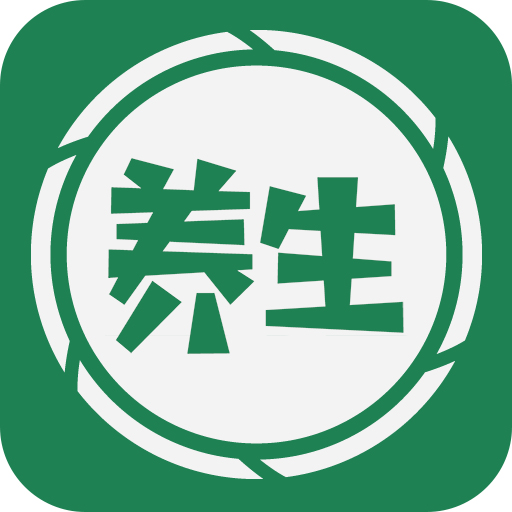如何使用Layui框架開發(fā)一個(gè)支持即時(shí)訂單管理的餐飲外賣平臺(tái)
在當(dāng)前社會(huì)節(jié)奏越來越快的背景下,餐飲外賣行業(yè)迅速崛起,成為國(guó)內(nèi)外人們常用的訂餐方式之一。為了滿足用戶的需求,一個(gè)高效、即時(shí)的訂單管理系統(tǒng)成了餐飲外賣平臺(tái)的重要一環(huán)。本文將介紹如何使用Layui框架開發(fā)一個(gè)支持即時(shí)訂單管理的餐飲外賣平臺(tái),并提供具體的代碼示例。
- 系統(tǒng)需求分析
在開始開發(fā)之前,我們首先需要明確系統(tǒng)的需求。一般而言,一個(gè)支持即時(shí)訂單管理的餐飲外賣平臺(tái)應(yīng)包括以下幾個(gè)主要功能:
用戶注冊(cè)與登錄:用戶可以通過注冊(cè)賬號(hào)和登錄系統(tǒng),享受個(gè)性化的使用體驗(yàn);餐廳管理:餐廳可以注冊(cè)并發(fā)布自己的菜單,設(shè)置營(yíng)業(yè)時(shí)間等信息;菜單瀏覽:用戶可以根據(jù)自己的喜好瀏覽各個(gè)餐廳的菜單,選擇所需商品并添加到購(gòu)物車;購(gòu)物車管理:用戶可以在購(gòu)物車中對(duì)商品進(jìn)行增刪改查操作,并生成訂單;訂單管理:商家可以查看所有的訂單信息,并對(duì)未處理的訂單進(jìn)行處理;實(shí)時(shí)通知:商家在訂單生成、支付、送貨等環(huán)節(jié)都能接收到及時(shí)通知。
- 開發(fā)準(zhǔn)備
在開始開發(fā)之前,我們需要準(zhǔn)備一些工具和資源。首先,我們需要安裝好Node.js環(huán)境和Vue.js腳手架工具。其次,我們需要下載Layui框架,并進(jìn)行相關(guān)配置。最后,我們需要準(zhǔn)備好一些美觀的界面素材,以提高用戶的使用體驗(yàn)。
- 開發(fā)步驟
下面是使用Layui框架開發(fā)支持即時(shí)訂單管理的餐飲外賣平臺(tái)的簡(jiǎn)要步驟:
步驟1:項(xiàng)目初始化
npm install -g vue-cli // 全局安裝Vue腳手架工具 vue init webpack restaurant-delivery // 初始化項(xiàng)目 cd restaurant-delivery // 進(jìn)入項(xiàng)目目錄 npm install // 安裝項(xiàng)目依賴 npm run dev // 啟動(dòng)項(xiàng)目
登錄后復(fù)制
步驟2:引入Layui框架
在項(xiàng)目首頁(yè)index.html文件中,引入Layui框架的相關(guān)文件,例如:
<link rel="stylesheet" href="https://cdn.staticfile.org/layui/2.5.6/css/layui.css"> <script src="https://cdn.staticfile.org/layui/2.5.6/layui.js"></script>
登錄后復(fù)制
步驟3:設(shè)計(jì)頁(yè)面布局
使用Layui框架的Grid系統(tǒng)設(shè)計(jì)頁(yè)面布局,例如:
<div class="layui-row">
<div class="layui-col-xs6">
<!-- 餐廳列表 -->
</div>
<div class="layui-col-xs6">
<!-- 菜單列表 -->
</div>
</div>
登錄后復(fù)制
步驟4:編寫業(yè)務(wù)邏輯
在Vue組件中編寫業(yè)務(wù)邏輯,例如:
<template>
<div class="restaurant-list">
<div class="layui-card">
<div class="layui-card-header">餐廳列表</div>
<div class="layui-card-body">
<table class="layui-table">
<thead>
<tr>
<th>餐廳名稱</th>
<th>營(yíng)業(yè)時(shí)間</th>
<th>操作</th>
</tr>
</thead>
<tbody>
<tr v-for="(restaurant, index) in restaurants" :key="index">
<td>{{ restaurant.name }}</td>
<td>{{ restaurant.businessTime }}</td>
<td>
<button class="layui-btn layui-btn-xs" @click="addToCart(restaurant)">加入購(gòu)物車</button>
</td>
</tr>
</tbody>
</table>
</div>
</div>
</div>
</template>
<script>
export default {
data() {
return {
restaurants: [],
cart: []
}
},
methods: {
addToCart(restaurant) {
this.cart.push(restaurant)
}
}
}
</script>
登錄后復(fù)制
步驟5:實(shí)現(xiàn)訂單管理功能
商家可以通過Layui框架提供的表格組件和彈窗組件來實(shí)現(xiàn)訂單管理功能,例如:
<template>
<div class="order-list">
<div class="layui-card">
<div class="layui-card-header">訂單列表</div>
<div class="layui-card-body">
<table class="layui-table">
<thead>
<tr>
<th>訂單號(hào)</th>
<th>下單時(shí)間</th>
<th>訂單金額</th>
<th>訂單狀態(tài)</th>
<th>操作</th>
</tr>
</thead>
<tbody>
<tr v-for="(order, index) in orders" :key="index">
<td>{{ order.orderNo }}</td>
<td>{{ order.createTime }}</td>
<td>{{ order.amount }}</td>
<td>{{ order.status }}</td>
<td>
<button class="layui-btn layui-btn-xs" @click="handleOrder(order)">處理訂單</button>
</td>
</tr>
</tbody>
</table>
</div>
</div>
</div>
</template>
<script>
export default {
data() {
return {
orders: []
}
},
methods: {
handleOrder(order) {
// 處理訂單邏輯,例如更新訂單狀態(tài)、發(fā)送通知等
}
}
}
</script>
登錄后復(fù)制
- 總結(jié)
本文介紹了如何使用Layui框架開發(fā)一個(gè)支持即時(shí)訂單管理的餐飲外賣平臺(tái)。通過合理設(shè)計(jì)頁(yè)面布局、編寫業(yè)務(wù)邏輯,結(jié)合Layui框架提供的組件、工具,可以快速高效地開發(fā)出一個(gè)具備基本功能的餐飲外賣平臺(tái)。當(dāng)然,為了滿足實(shí)際業(yè)務(wù)需求,可能還需要進(jìn)一步進(jìn)行功能擴(kuò)展和性能優(yōu)化,希望讀者能夠在本文的基礎(chǔ)上深入研究和實(shí)踐,開發(fā)出更加完善的系統(tǒng)。
以上就是如何使用Layui框架開發(fā)一個(gè)支持即時(shí)訂單管理的餐飲外賣平臺(tái)的詳細(xì)內(nèi)容,更多請(qǐng)關(guān)注www.92cms.cn其它相關(guān)文章!
<!–
–>






